Construction safety:
Construction
Nearly 6.5 million people work at approximately 252,000 construction sites across the nation on any given day. The fatal injury rate for the construction industry is higher than the national average in this category for all industries.
Potential hazards for workers in construction include:
- Falls (from heights);
- Trench collapse;
- Scaffold collapse;
- Electric shock and arc flash/arc blast;
- Failure to use proper personal protective equipment; and
- Repetitive motion injuries.
Hazards & Solutions
For construction, the OSHA standards most frequently included in the agency's citations in FY 2004 were:
- Scaffolding
- Fall protection (scope, application, definitions)
- Excavations (general requirements)
- Ladders
- Head protection
- Excavations (requirements for protective systems)
- Hazard communication
- Fall protection (training requirements)
- Construction (general safety and health provisions)
- Electrical (wiring methods, design and protection)
Scaffolding
Hazard: When scaffolds are not erected or used properly, fall hazards can occur. About 2.3 million construction workers frequently work on scaffolds. Protecting these workers from scaffold-related accidents would prevent an estimated 4,500 injuries and 50 fatalities each year.
Solutions:
- Scaffold must be sound, rigid and sufficient to carry its own weight plus four times the maximum intended load without settling or displacement. It must be erected on solid footing.
- Unstable objects, such as barrels, boxes, loose bricks or concrete blocks must not be used to support scaffolds or planks.
- Scaffold must not be erected, moved, dismantled or altered except under the supervision of a competent person.
- Scaffold must be equipped with guardrails, mid rails and toe boards.
- Scaffold accessories such as braces, brackets, trusses, screw legs or ladders that are damaged or weakened from any cause must be immediately repaired or replaced.
- Scaffold platforms must be tightly planked with scaffold plank grade material or equivalent.
- A "competent person" must inspect the scaffolding and, at designated intervals, reinspect it.
- Rigging on suspension scaffolds must be inspected by a competent person before each shift and after any occurrence that could affect structural integrity to ensure that all connections are tight and that no damage to the rigging has occurred since its last use.
- Synthetic and natural rope used in suspension scaffolding must be protected from heat producing sources.
- Employees must be instructed about the hazards of using diagonal braces as fall protection.
- Scaffold can be accessed by using ladders and stairwells.
- Scaffolds must be at least 10 feet from electric power lines at all times.
Fall Protection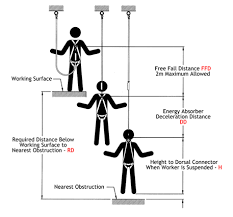
Hazard: Each year, falls consistently account for the greatest number of fatalities in the construction industry. A number of factors are often involved in falls, including unstable working surfaces, misuse or failure to use fall protection equipment and human error. Studies have shown that using guardrails, fall arrest systems, safety nets, covers and restraint systems can prevent many deaths and injuries from falls.
Solutions:
- Consider using aerial lifts or elevated platforms to provide safer elevated working surfaces;
- Erect guardrail systems with toe boards and warning lines or install control line systems to protect workers near the edges of floors and roofs;
- Cover floor holes; and/or
- Use safety net systems or personal fall arrest systems (body harnesses).
Ladders
Hazard: Ladders and stairways are another source of injuries and fatalities among construction workers. OSHA estimates that there are 24,882 injuries and as many as 36 fatalities per year due to falls on stairways and ladders used in construction. Nearly half of these injuries were serious enough to require time off the job.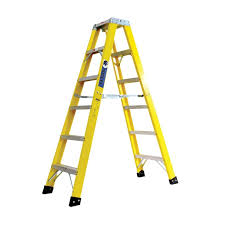
Solutions:
- Use the correct ladder for the task.
- Have a competent person visually inspect a ladder before use for any defects such as:
- Structural damage, split/bent side rails, broken or missing rungs/steps/cleats and missing or damaged safety devices;
- Grease, dirt or other contaminants that could cause slips or falls;
- Paint or stickers (except warning labels) that could hide possible defects .
- Make sure that ladders are long enough to safely reach the work area.
- Mark or tag ("Do Not Use") damaged or defective ladders for repair or replacement, or destroy them immediately.
- Never load ladders beyond the maximum intended load or beyond the manufacturer's rated capacity.
- Be sure the load rating can support the weight of the user, including materials and tools.
- Avoid using ladders with metallic components near electrical work and overhead power lines.
Stairways
Hazard: Slips, trips and falls on stairways are a major source of injuries and fatalities among construction workers.
Solutions:
- Stairway treads and walkways must be free of dangerous objects, debris and materials.
- Slippery conditions on stairways and walkways must be corrected immediately.
- Make sure that treads cover the entire step and landing.
- Stairways having four or more risers or rising more than 30 inches must have at least one handrail.
Trenching
Hazard: Trench collapses cause dozens of fatalities and hundreds of injuries each year. Trenching deaths rose in 2003.
Solutions:
- Never enter an unprotected trench.
- Always use a protective system for trenches feet deep or greater.
- Employ a registered professional engineer to design a protective system for trenches 20 feet deep or greater.
- Protective Systems:
- Sloping to protect workers by cutting back the trench wall at an angle inclined away from the excavation not steeper than a height/depth ratio of 11 2 :1, according to the sloping requirements for the type of soil.
- Shoring to protect workers by installing supports to prevent soil movement for trenches that do not exceed 20 feet in depth.
- Shielding to protect workers by using trench boxes or other types of supports to prevent soil cave-ins.
- Always provide a way to exit a trench--such as a ladder, stairway or ramp--no more than 25 feet of lateral travel for employees in the trench.
- Keep spoils at least two feet back from the edge of a trench.
- Make sure that trenches are inspected by a competent person prior to entry and after any hazard-increasing event such as a rainstorm, vibrations or excessive surcharge loads.
Cranes
Hazard: Significant and serious injuries may occur if cranes are not inspected before use and if they are not used properly. Often these injuries occur when a worker is struck by an overhead load or caught within the crane's swing radius. Many crane fatalities occur when the boom of a crane or its load line contact an overhead power line.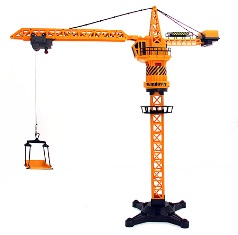
Solutions:
- Check all crane controls to insure proper operation before use.
- Inspect wire rope, chains and hook for any damage.
- Know the weight of the load that the crane is to lift.
- Ensure that the load does not exceed the crane's rated capacity.
- Raise the load a few inches to verify balance and the effectiveness of the brake system.
- Check all rigging prior to use; do not wrap hoist ropes or chains around the load.
- Fully extend outriggers.
- Do not move a load over workers.
- Barricade accessible areas within the crane's swing radius.
- Watch for overhead electrical distribution and transmission lines and maintain a safe working clearance of at least 10 feet from energized electrical lines.
Hazard Communication
Hazard: Failure to recognize the hazards associated with chemicals can cause chemical burns, respiratory problems, fires and explosions.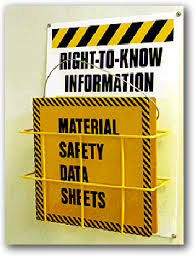
Solutions:
- Maintain a Material Safety Data Sheet (MSDS) for each chemical in the facility.
- Make this information accessible to employees at all times in a language or formats that are clearly understood by all affected personnel.
- Train employees on how to read and use the MSDS.
- Follow manufacturer's MSDS instructions for handling hazardous chemicals.
- Train employees about the risks of each hazardous chemical being used.
- Provide spill clean-up kits in areas where chemicals are stored.
- Have a written spill control plan.
- Train employees to clean up spills, protect themselves and properly dispose of used materials.
- Provide proper personal protective equipment and enforce its use.
- Store chemicals safely and securely.
Forklifts
Hazard: Approximately 100 employees are fatally injured and approximately 95,000 employees are injured every year while operating powered industrial trucks. Forklift turnover accounts for a significant number of these fatalities.
Solutions:
- Train and certify all operators to ensure that they operate forklifts safely.
- Do not allow any employee under 18 years old to operate a forklift.
- Properly maintain haulage equipment, including tires.
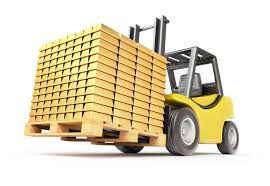
- Do not modify or make attachments that affect the capacity and safe operation of the forklift without written approval from the forklift's manufacturer.
- Examine forklift truck for defects before using.
- Follow safe operating procedures for picking up, moving, putting down and stacking loads.
- Drive safely--never exceed 5 mph and slow down in congested or slippery surface areas.
- Prohibit stunt driving and horseplay.
- Do not handle loads that are heavier than the capacity of the industrial truck.
- Remove unsafe or defective forklift trucks from service.
- Operators shall always wear seat belts.
- Avoid traveling with elevated loads.
- Assure that rollover protective structure is in place.
- Make certain that the reverse signal alarm is operational and audible above the surrounding noise level.
Head Protection
Hazard: Serious head injuries can result from blows to the head.
Solution:
- Be sure that workers wear hard hats where there is a potential for objects falling from above, bumps to their heads from fixed objects, or accidental head contact with electrical hazards.
Safety Checklists
The following checklists may help you take steps to avoid hazards that cause injuries, illnesses and fatalities. As always, be cautious and seek help if you are concerned about a potential hazard.
Personal Protective Equipment (PPE)
Eye and Face Protection: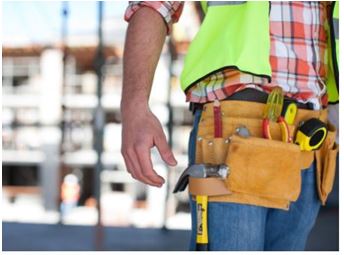
- Safety glasses or face shields are worn anytime work operations can cause foreign objects getting into the eye such as during welding, cutting, grinding, nailing (or when working with concrete and/or harmful chemicals or when exposed to flying particles).
- Eye and face protectors are selected based on anticipated hazards.
- Safety glasses or face shields are worn when exposed to any electrical hazards including work on energized electrical systems.
Foot Protection
- Construction workers should wear work shoes or boots with slip-resistant and puncture-resistant soles.
- Safety-toed footwear is worn to prevent crushed toes when working around heavy equipment or falling objects.
Hand Protection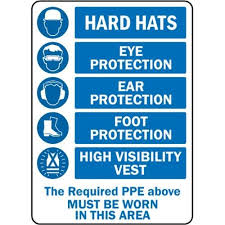
- Gloves should fit snugly.
- Workers wear the right gloves for the job (for example, heavy-duty rubber gloves for concrete work, welding gloves for welding, insulated gloves and sleeves when exposed to electrical hazards).
Head Protection
- Workers shall wear hard hats where there is a potential for objects falling from above, bumps to their heads from fixed objects, or of accidental head contact with electrical hazards.
- Hard hats are routinely inspected for dents, cracks or deterioration.
- Hard hats are replaced after a heavy blow or electrical shock.
- Hard hats are maintained in good condition.
Respiratory protection
Respirators can protect against dusts, vapours and gases. There are many types of respiratory protective equipment (RPE), including:
- disposable face mask respirators;
- half-mask dust respirators;
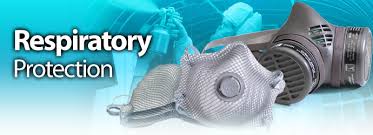
- high-efficiency dust respirators;
- positive-pressure powered respirators;
- ventilator visor or helmet respirators;
- compressed air line breathing apparatus;
- self-contained breathing apparatus.
Scaffolding
- Scaffolds should be set on sound footing.
- Damaged parts that affect the strength of the scaffold are taken out of service.
- Scaffolds are not altered.
- All scaffolds should be fully planked.
- Scaffolds are not moved horizontally while workers are on them unless they are designed to be mobile and workers have been trained in the proper procedures.
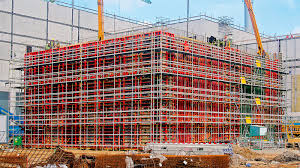
- Employees are not permitted to work on scaffolds when covered with snow, ice, or other slippery materials.
- Scaffolds are not erected or moved within 10 feet of power lines.
- Employees are not permitted to work on scaffolds in bad weather or high winds unless a competent person has determined that it is safe to do so.
- Ladders, boxes, barrels, buckets or other makeshift platforms are not used to raise work height.
- Extra material is not allowed to build up on scaffold platforms.
- Scaffolds should not be loaded with more weight than they were designed to support.
Electrical Safety
- Work on new and existing energized (hot) electrical circuits is prohibited until all power is shut off and grounds are attached.
- An effective Lockout/Tag out system is in place.
- Frayed, damaged or worn electrical cords or cables are promptly replaced.
- All extension cords have grounding prongs.
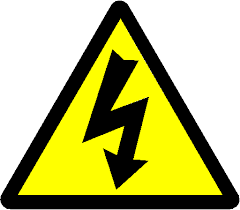
- Protect flexible cords and cables from damage. Sharp corners and projections should be avoided.
- Use extension cord sets used with portable electric tools and appliances that are the three-wire type and designed for hard or extra-hard service. (Look for some of the following letters imprinted on the casing: S, ST, SO, STO.)
- All electrical tools and equipment are maintained in safe condition and checked regularly for defects and taken out of service if a defect is found.
- Do not bypass any protective system or device designed to protect employees from contact with electrical energy.
- Overhead electrical power lines are located and identified.
- Ensure that ladders, scaffolds, equipment or materials never come within 10 feet of electrical power lines.
- All electrical tools must be properly grounded unless they are of the double insulated type.
- Multiple plug adapters are prohibited.
Floor and Wall Openings
- Floor openings (12 inches or more) are guarded by a secured cover, a guardrail or equivalent on all sides (except at entrances to stairways).
- Toe boards are installed around the edges of permanent floor openings (where persons may pass below the opening).
Elevated Surfaces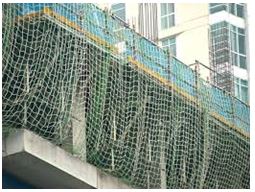
- Signs are posted, when appropriate, showing the elevated surface load capacity.
- Surfaces elevated more than 48 inches above the floor or ground have standard guardrails.
- All elevated surfaces (beneath which people or machinery could be exposed to falling objects) have standard 4-inch toe boards.
- A permanent means of entry and exit with handrails is provided to elevated storage and work surfaces.
- Material is piled, stacked or racked in a way that prevents it from tipping, falling, collapsing, rolling or spreading.
Hazard Communication
- A list of hazardous substances used in the workplace is maintained and readily available at the work site.
- There is a written hazard communication program addressing Material Safety Data Sheets (MSDS), labeling and employee training.
- Each container of a hazardous substance (vats, bottles, storage tanks) is labeled with product identity and a hazard warning(s) (communicating the specific health hazards and physical hazards).
- Material Safety Data Sheets are readily available at all times for each hazardous substance used.
- There is an effective employee training program for hazardous substances.
Crane Safety
- Cranes and derricks are restricted from operating within 10 feet of any electrical power line
- The upper rotating structure supporting the boom and materials being handled is provided with an electrical ground while working near energized transmitter towers.
- Rated load capacities, operating speed and instructions are posted and visible to the operator.
- Cranes are equipped with a load chart.
- The operator understands and uses the load chart.
- The operator can determine the angle and length of the crane boom at all times.
- Crane machinery and other rigging equipment is inspected daily prior to use to make sure that it is in good condition.
- Accessible areas within the crane's swing radius are barricaded.
- Tag lines are used to prevent dangerous swing or spin of materials when raised or lowered by a crane or derrick.
- Illustrations of hand signals to crane and derrick operators are posted on the job site.
- The signal person uses correct signals for the crane operator to follow.
- Crane outriggers are extended when required.
- Crane platforms and walkways have antis kid surfaces.
- Broken, worn or damaged wire rope is removed from service.
- Guardrails, hand holds and steps are provided for safe and easy access to and from all areas of the crane.
- Load testing reports/certifications are available.
- Tower crane mast bolts are properly torqued to the manufacturer's specifications.
- Overload limits are tested and correctly set.
- The maximum acceptable load and the last test results are posted on the crane.
- Initial and annual inspections of all hoisting and rigging equipment are performed and reports are maintained.
- Only properly trained and qualified operators are allowed to work with hoisting and rigging equipment.
Forklifts
- Forklift truck operators are competent to operate these vehicles safely as demonstrated by their successful completion of training and evaluation.
- No employee under 18 years old is allowed to operate a forklift.
- Forklifts are inspected daily for proper condition of brakes, horns, steering, forks and tires.
- Powered industrial trucks (forklifts) meet the design and construction requirements established in American National Standards Institute (ANSI) for Powered Industrial Trucks, Part II ANSI B56.1-1969.
- Written approval from the truck manufacturer is obtained for any modification or additions which affect capacity and safe operation of the vehicle.
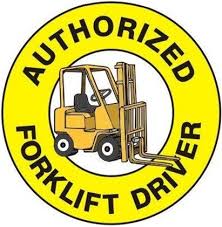
- Capacity, operation and maintenance instruction plates, tags or decals are changed to indicate any modifications or additions to the vehicle.
- Battery charging is conducted in areas specifically designated for that purpose.
- Material handling equipment is provided for handling batteries, including conveyors, overhead hoists or equivalent devices.
- Reinstalled batteries are properly positioned and secured in the truck.
- Smoking is prohibited in battery charging areas.
- Precautions are taken to prevent open flames, sparks or electric arcs in battery charging areas.
- Refresher training is provided and an evaluation is conducted whenever a forklift operator has been observed operating the vehicle in an unsafe manner and when an operator is assigned to drive a different type of truck.
- Load and forks are fully lowered, controls neutralized, power shut off and brakes set when a powered industrial truck is left unattended.
- There is sufficient headroom for the forklift and operator under overhead installations, lights, pipes, sprinkler systems, etc
- Overhead guards are in place to protect the operator against falling objects.
- Trucks are operated at a safe speed.
- All loads are kept stable, safely arranged and fit within the rated capacity of the truck.
- Unsafe and defective trucks are removed from service.
First aid
First aid can save lives, reduce pain and help an injured person make a quicker recovery. The Health and Safety (First Aid) Regulations 19816 require you to provide adequate and appropriate equipment, facilities and personnel to enable first aid to be given to your employees if they are injured or become ill at work. The minimum provision for all sites is: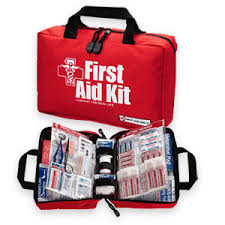
- a first aid box with enough equipment to cope with the number of workers on site;
- an appointed person to take charge of first-aid arrangements;
- information telling workers the name of the appointed person or first aider and where to find them. A notice in the site hut is a good way of doing this.
An appointed person is someone you choose to take charge when someone is injured or falls ill and who will telephone for an ambulance if one is required. An appointed person should not attempt to give first aid for which they have not been trained.
A first aider is someone who has undergone a training course in administering first aid at work and holds a current first aid at work certificate. A first aider can undertake the duties of an appointed person. The number of qualified first aiders needed depends on the risk of injury and ill health on site. As a guide:
The first-aid arrangements should cover shift working, night and weekend working where this is carried out. This may mean appointing or training several people to ensure adequate cover.
Fire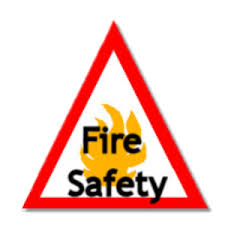
Many solids, liquids and gases can catch fire and burn. It only takes a source of ignition, which may be a small flame or an electrical spark, together with air. Any outbreak of fire threatens the health and safety of those on site and will be costly in damage and delay. It can also be a hazard to people in surrounding properties. Fire can be a particular hazard in refurbishment work when there is a lot of dry timber and at the later stages of building jobs where flammable materials such as adhesives, insulating materials and soft furnishings are present.
Many fires can be avoided by careful planning and control of work activities. Good housekeeping and site tidiness are important not only to prevent fire, but also to ensure that emergency routes do not become obstructed. Making site rules can help.
Precautions to prevent fires
The following precautions should be taken to prevent fires:
- use less-easily ignited and fewer flammable materials, eg use water-based or low-solvent adhesives and paint;
- keep the quantity of flammables at the workplace to a minimum;
- always keep and carry flammable liquids in suitable closed containers;
- if work involving the use of flammable materials is being carried out, stop people smoking and don’t allow other work activities involving potential ignition sources to take place nearby. For example, if floor coverings are being laid using solvent-based adhesives, don’t allow soldering of pipes at the same time;
- ensure that pipes, barrels, tanks etc which may have contained flammable gases or liquids are purged or otherwise made safe before using hot cutting equipment, such as a cutting torch or angle grinder. A pipe or container may appear to be empty, but can contain enough material on its sides, or within rust or other sediments, to produce a flammable or explosive atmosphere within it when heated or disturbed. Specialist advice may be required;
- to minimize the risk of gas leaks and fires involving gas-fired plant:
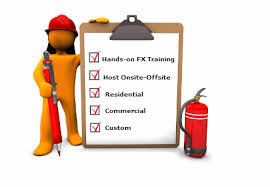
>close valves on gas cylinders when not in use;
>regularly check hoses for wear and leaks;
.prevent oil or grease coming into contact with oxygen cylinder valves;
>do not leave bitumen boilers unattended when alight;
- store flammable solids, liquids and gases safely. Separate them from each other and from oxygen cylinders or oxidizing materials. Keep them in ventilated secure stores or an outdoor storage area. Do not store them in or under occupied work areas or where they could obstruct or endanger escape routes;
- have an extinguisher to hand when doing hot work such as welding or using a disc cutter that produces sparks;
- check the site at lunch time and at the end of the day to see that all plant and equipment that could cause a fire is turned off. Stop hot working an hour before people go home, as this will allow more time for smouldering fires to be identified; and
- provide closed metal containers to collect rubbish and remove them from the site regularly. Collect highly flammable waste such as solvent-soaked rags separately in closed fire-resisting containers.
Means of fighting fire
As well as providing fire extinguishers for hot work, fire extinguishers should be located at identified fire points around the site. The extinguishers should be appropriate to the nature of the potential fire:
- wood, paper and cloth – water extinguisher;
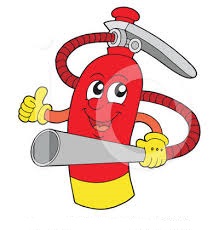
- flammable liquids – dry powder or foam extinguisher;
- electrical – carbon dioxide (CO2) extinguisher.
Nominated people should be trained in how to use extinguishers.
If the building being worked in is occupied (eg an office, hotel or hospital), make sure the work does not interfere with the escape route from the building, or any fire separation, alarms, dry risers, or sprinkler systems. Check this with the building occupier or the Fire Brigade.
Fire doors should never be locked, left open or removed. Keep existing wet and dry risers ready for use and install any new ones as soon as possible.
Occupational health risks
Safety risks in construction have been recognized for some time. Occupational health risks have only recently started to be addressed. The main health risks in construction are:
- musculoskeletal disorders: back and other muscle and joint injuries;
- hand-arm vibration syndrome: pain and numbness in the fingers and hands caused by the use of vibrating tools;
- dermatitis: redness and inflammation of the skin related to exposure to hazardous substances such as cements and solvents
- noise-induced hearing loss: deafness or ringing in the ears caused by exposure to high levels of noise; asbestos-related diseases
Breathing in fumes, vapors, dust: does the manufacturer’s information say that there is a risk from inhaling the substance? Are large amounts of the substance being used? Is the work being done in a way that results in heavy air contamination, eg spray application? Is the work to be done in an area that is poorly ventilated, eg a basement? Does the work generate a hazard, eg hot cutting metal covered with lead causes lead fumes to be given off?
inrect contact with skin: does the manufacturer’s information say there is a risk from direct contact? How severe is it, eg are strong acids or alkalies being used? Does the method of work make skin contact likely, eg from splashes when pouring from one container to another, or from the method of application?
Swallowing or eating contaminated material:some materials can contaminate the skin and hands. The contamination can then be passed to a person’s mouth when they eat or smoke. This is a particular problem when handling lead and sanding lead-based paint. Make sure people do not smoke or eat without washing first.
Prevention
If harm from the substance is possible, the first step to take is to try and avoid it completely by not using it at all. This will mean either:
doing the job in a different way, eg instead of using acids or caustic soda to unblock a drain, use drain rods; or
using a substitute substance, eg instead of using spirit-based paints, use water-based ones, which are generally less hazardous. However, always check one hazard is not simply being replaced by another.
Control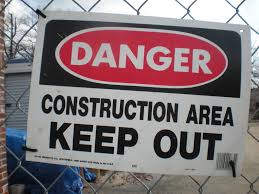
If the substance has to be used because there is no alternative, or because use of the least hazardous alternative still leads to significant risk, the next step is to try and control exposure. Some of the ways this could be done include:
- transferring liquids with a pump or siphon (not one primed by mouth) rather than by hand. Keep containers closed except when transferring;
- rather than spraying solvent-based materials, use a roller with a splash guard or apply by brush;
- using as little of the hazardous substances as possible – don’t take more to the workplace than is needed;
- using cutting and grinding tools and blasting equipment fitted with exhaust ventilation or water suppression to control dust;
- ensuring good ventilation in the working area by opening doors, windows and skylights. Mechanical ventilation equipment might be needed in some cases.
Personal hygiene
Substances can also be a hazard to health when they are transferred from workers’ hands onto food, cigarettes etc and so taken into the body. This can be avoided by good personal hygiene, eg by:
- washing hands and face before eating, drinking and smoking and before, as well as after, using the toilet;
- eating, drinking and smoking only away from the work area.
In cases where clothing may become contaminated, people should change out of this clothing before eating and drinking.Make sure those at risk know the hazards. Provide good washing facilities and somewhere clean to eat meals.
Good clean welfare facilities can play an important part in protecting the health of everyone involved in the work. Make sure as few people as possible are exposed to hazardous substances by excluding people not directly involved in the work from the contaminated area.
Emergency procedures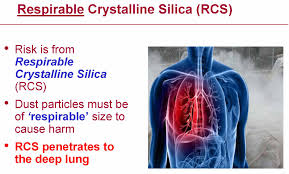
At most sites, the most obvious emergency is fire. The general principles for dealing with fire risks are considered in greater. These general principles can be applied to planning for other emergencies, such as flooding in excavations, tunnels, work near the sea or rivers, waterworks etc, or a risk from asphyxiation or toxic gases. Plan emergency procedures before work begins and put general precautions in place from the start of work.
Some emergencies may require evacuation of the site or part of the site, while others might involve the rescue of an injured person. For example, it may be necessary to plan how someone injured in a fall within a confined space or within a restricted plant room can be attended to by first aiders and the emergency services before being taken to a place of safety.
Planning for an emergency
When planning emergency procedures, routes and exits, take into account:
- the type of work being done on site (eg extra precautions may be required to maintain routes down stairs during demolition);
- the characteristics and size of the site and the number and location of workplaces on the site. A large site with people working at many locations will probably need bells or sirens at a number of places to raise the alarm. On small sites with only two or three people working, an air horn may be adequate;
- the plant and equipment being used (eg consider tower crane drivers, people working on suspended access equipment or where the exit may be obstructed by equipment);
- the number of people likely to be present on the site at any one time. On sites where many people work, escape routes need to be wide enough to allow everyone to get through doorways or down stairs easily without them becoming overcrowded; and
- the physical and chemical properties of substances or materials on or likely to be on the site (eg work at petrochemical installations or at sites where flammable paints or glues are in use may require an increased standard of ventilation).
Take precautions to ensure:
- the likelihood of emergencies arising is as low as possible;
- everyone on site can be alerted in an emergency;
- everyone working on site (including contractors who may only be at the site for a few hours) knows what signal will be given if there is an emergency and knows what to do;
- someone who has been trained in what to do is on site while work is in progress and will take responsibility for co-ordination procedures;
- emergency routes are available, kept clear, signed and adequately lit. When the site is not adequately lit by daylight for all periods when people are at work, provide lighting that will come on automatically in an emergency;
- there are arrangements for calling the emergency services. It is good practice to let the Fire Brigade know about any work in tunnels, confined spaces or above 18 m (above this height they may require specialist access equipment) and anywhere else where specialized rescue equipment may be needed;
- there is adequate access to the site for the emergency services and that access does not become blocked by plant or material building up;
- arrangements for treating and recovering injured people are available;
- if an emergency does arise, someone is posted at the site entrance, or in another prominent position, so that they can direct the emergency services.
Click the below link to know more detailed safety guidelines about construction
Fall protection safety guideline
Work permit procedures guideline
Personal protective equipment guideline
Hazard Communication guideline
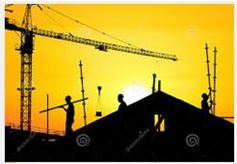
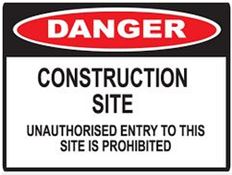
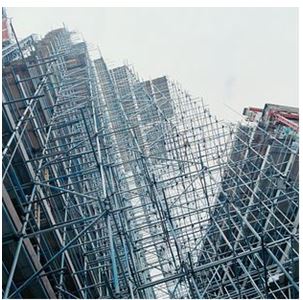
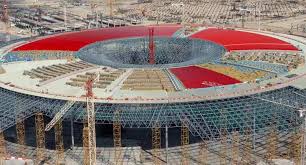
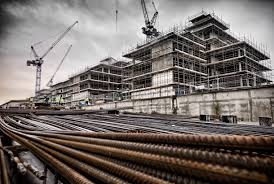
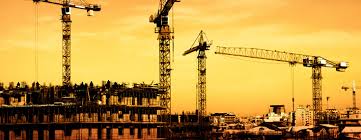
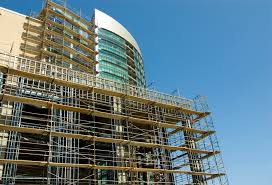
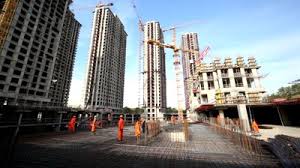
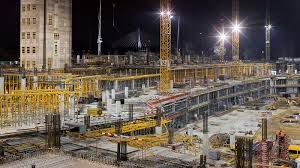
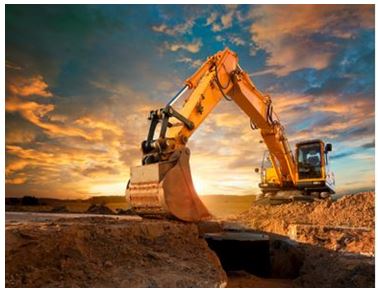
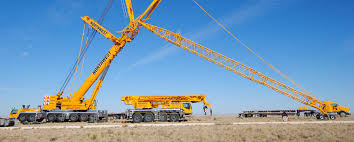

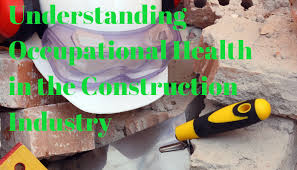
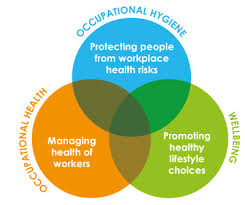
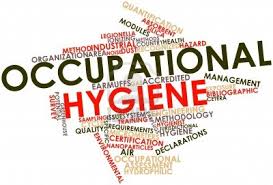
.jpe?timestamp=1447586853854)